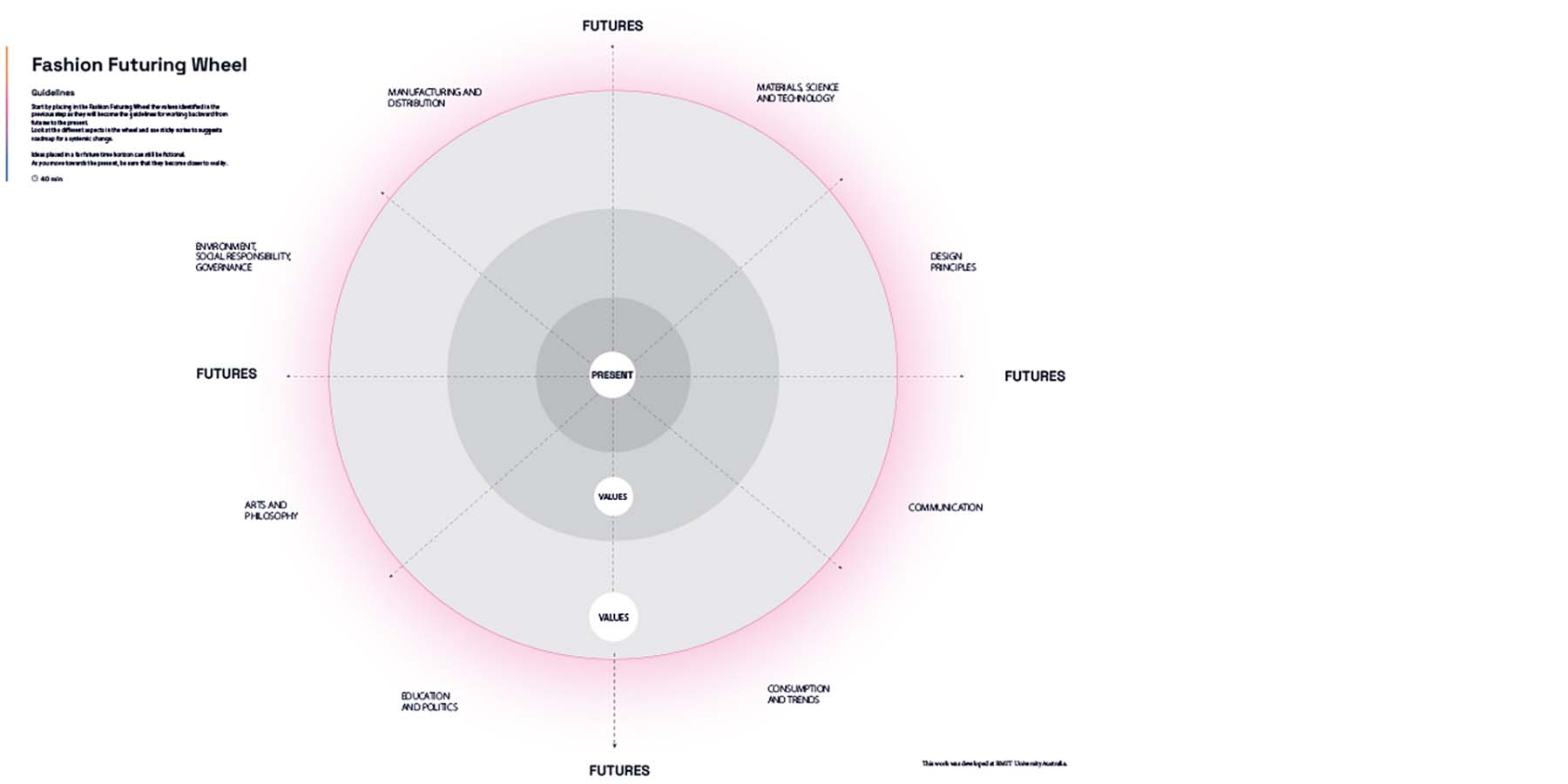The design process consisted of four phases: (1) Deep Diving, (2) Reorienting, (3) Floating, and (4) Landing.
- Deep Diving was a stage dedicated to understanding the problem. I critically examined and reflected on fashion as an industry and system and probed how fashion futures practices have evolved, particularly fashion forecasting. Through literature review and analysis of current case studies, I understood that the present purpose of fashion forecasting is to propose short-term style predictions that encourage a fast replacement of styles despite the climate crisis.
- Reorienting was a stage dedicated to explore other possibilities beyond trend forecasting. I thus sought out other discipline areas, theorists and practitioners concerned with the relationships between society, culture, design, and futures beyond predictive approaches and more aligned with sustainability. As a result, I started to redirect my practice, shifting it from a short-term, predictive, and market-driven approach to explore the collision between design and futures as a way to transition towards resilient and sustainable futures.
- Floating refers to impermanence and openness within the unknown. From this posture, I designed and conducted a series of workshops to test ideas, methods, tools, and approaches that sit at the intersection between fashion and futures. This stage involved observing and analysing conversations and interactions among participants and reflecting on the feedback provided as an iterative and collaborative design process to adapt and refine tools and methods.
- Landing refers to the stage of materialisation of Fashion Futuring concepts into an actionable toolkit. It involved the development of the visual identity of the project, website, and final tools.






